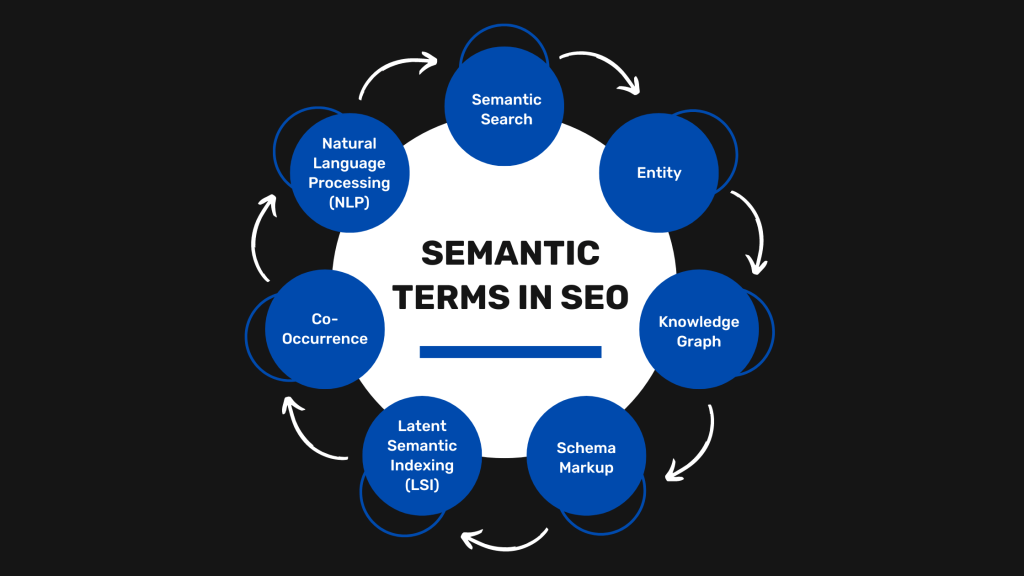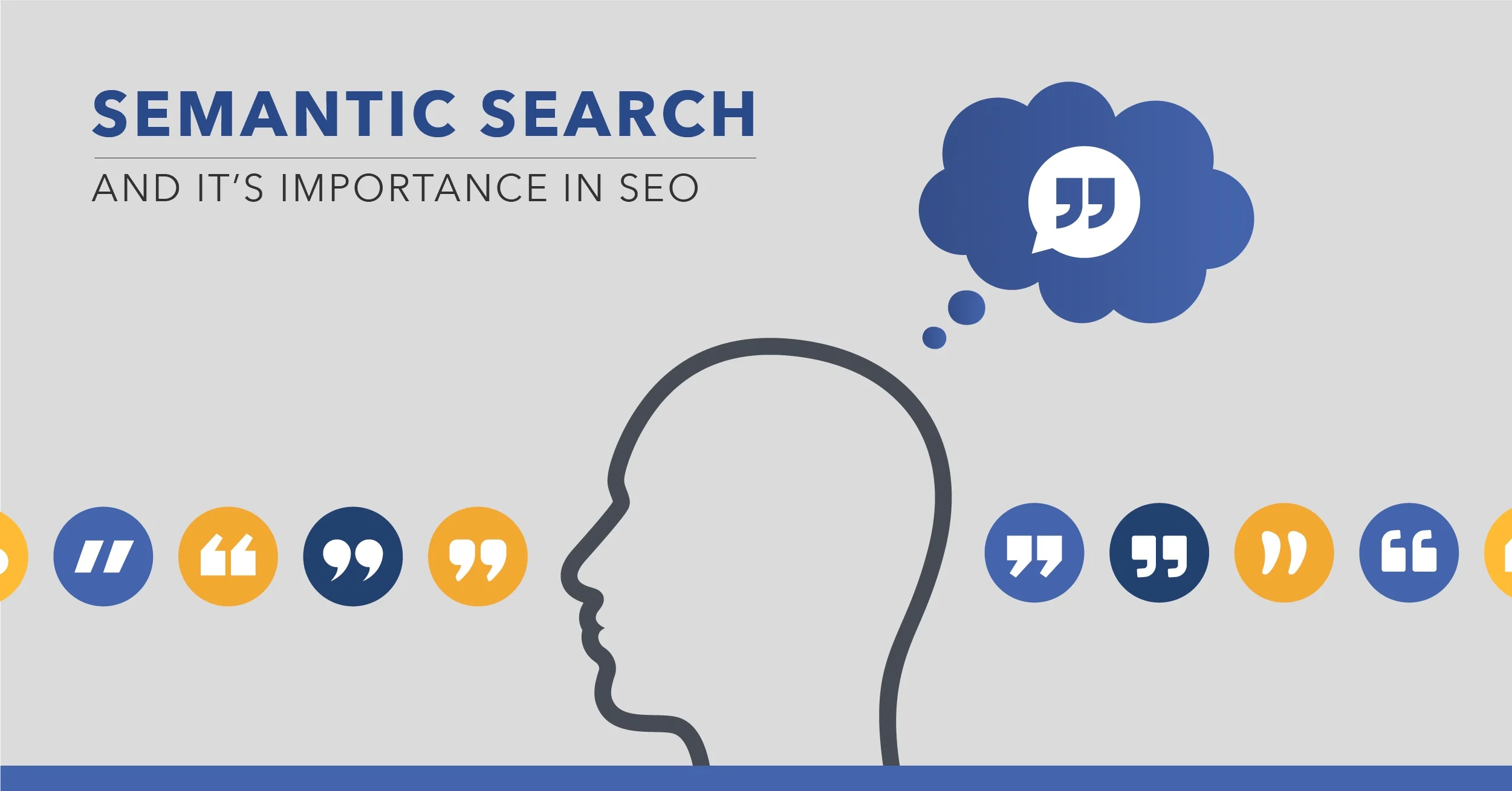Introduction
Search Engine Optimization (SEO) has always been a fundamental strategy for digital marketing success. However, as the internet has evolved, so has SEO. In the early days, SEO was heavily reliant on keyword matching, where the presence of specific keywords in content was crucial. With advancements in Google’s algorithms, such as Bidirectional Encoder Representations from Transformers (BERT), SEO has shifted from traditional SEO to a more sophisticated approach known as semantic SEO.
The rise of AI-powered search, driven by AI systems, has enabled search engines to understand not only the exact search terms but also the user’s intent and the context behind the query. This has led to a change in how semantic keywords are used and optimized. Semantic SEO focuses on the meaning behind words, their relationships to each other, and the broader context of a topic, rather than focusing solely on exact-match keywords.
In this article, we will explore semantic SEO in depth, the benefits it offers, and how it differs from traditional SEO. We will also dive into strategies such as topic clusters, schema markup, and structured data to boost your website’s visibility and rankings in the ever-changing digital landscape.
What is Semantic SEO?
Semantic SEO refers to the optimization techniques used to improve the relevance of content for both users and search engines. Unlike traditional SEO, which mainly focuses on exact-match keywords, semantic SEO prioritizes the meaning and context of words. This strategy helps search engines understand the user’s query and the relationships between words, allowing them to provide relevant search results.
By using semantic markup (such as schema.org) and implementing strategies like topic clusters, content creators can enhance their content’s chances of ranking higher. These strategies provide a deeper understanding of the main topic and related semantic keywords, allowing websites to rank for a broader array of search terms and appear in featured snippets.
As Google’s Knowledge Graph continues to evolve, understanding semantic indexing and optimizing content for semantic SEO becomes even more critical. By utilizing semantic markup and providing rich snippets, businesses can improve click-through rates, increase user engagement, and ensure their content aligns with search intent.
The Shift to Semantic Search
The shift to semantic search is one of the most significant changes in SEO over the past decade. Google’s algorithms have become much more sophisticated, with updates like BERT and AI Search allowing search engines to process user queries in a more natural, human-like manner.
Previously, SEO focused on matching specific keywords with web pages. However, with the introduction of semantic SEO, the focus has shifted to understanding the context and relationships between words. For example, semantic search does not just look for the word “SEO tools,” but understands the search intent behind it—whether the user is looking for a list of tools, tutorials on using them, or reviews.
This new focus on search intent means that businesses need to ensure their content is comprehensive and contextually relevant to the user’s needs. Optimizing for semantic SEO involves creating high-quality content that addresses the main topic in-depth, while also providing detailed information on related concepts and related keywords.

Core Concepts of Semantic SEO
Search Intent and Its Importance
The concept of search intent is the backbone of semantic SEO. Every user query reflects a specific intent: informational, transactional, or navigational. By understanding this intent, businesses can tailor their content to fulfill the user’s needs more effectively.
For example, if someone searches for “best SEO tools”, the intent is likely transactional—they are looking to buy or compare tools. In contrast, a search for “how to use SEO tools” suggests informational intent, where the user is looking for step-by-step guides or tutorials.
Aligning content with search intent ensures that websites deliver what users are truly looking for. This leads to better engagement, reduced bounce rates, and higher chances of appearing in featured snippets or Google’s Knowledge Panel.
Latent Semantic Indexing (LSI) Keywords
LSI keywords are terms that are related to the main keyword but are not necessarily synonyms. Using these related terms helps search engines understand the content better and rank it for a broader set of search queries.
For example, if the main keyword is “SEO strategy”, related LSI keywords could include “SEO techniques,””keyword research,””link building,” and “content optimization.” Including these semantic keywords allows content to rank for a variety of search terms, even if they aren’t directly mentioned in the text.
By optimizing for semantic SEO and incorporating LSI keywords, businesses can ensure their content ranks for a wider range of relevant search results, leading to higher traffic and engagement.
Structured Data and Schema Markup
Structured data and schema markup are essential components of semantic SEO. These techniques help search engines understand the content on a webpage by providing additional context. For example, if a website has a blog post, schema markup can help identify the post’s title, author, publication date, and more.
By implementing structured data and schema.org markup, businesses can increase their chances of appearing in rich snippets, knowledge panels, and other enhanced search results. This, in turn, improves search visibility and click-through rates.
Additionally, using semantic markup helps search engines like Google interpret the content as more relevant and authoritative, increasing the chances of ranking higher for the main topic and related search queries.
How Semantic SEO Works
To optimize for semantic SEO, businesses should follow several key strategies:
- Create Topic Clusters: Organize content into pillar pages and cluster pages. A pillar page covers a broad topic, while cluster pages address more specific subtopics. This structure helps search engines understand the relationships between different web pages and how they contribute to the main topic.
- Focus on Search Intent: Ensure content addresses the user’s query and aligns with their search intent. Whether the intent is informational, navigational, or transactional, the content should meet the user’s needs comprehensively.
- Incorporate LSI Keywords and Semantic Markup: Use semantic keywords and LSI keywords throughout the content. Implement structured data to provide additional context and help search engines understand the content better.
- Optimize for Voice Search: With the rise of AI-powered search and voice assistants, optimizing for voice search has become critical. Use natural language and long-tail phrases to ensure your content ranks for voice search results.
Benefits of Semantic SEO
Semantic SEO offers numerous benefits:
- Higher Rankings: By optimizing for search intent and using semantic markup, websites can rank for a broader set of related keywords and search terms.
- Improved User Engagement: Content that addresses user needs and search intent leads to better engagement, reducing bounce rates and increasing time on page.
- Increased Organic Traffic: With semantic SEO, websites can attract more organic traffic from search engines, especially as they rank for more relevant search results.
Implementing Semantic SEO on Your Website
- Create Comprehensive Content: Focus on delivering high-quality, depth content that answers the user’s query and covers the main topic and related semantic keywords.
- Optimize Site Structure: Organize content into topic clusters, with pillar pages covering broad topics and cluster pages addressing more specific topics.
- Use Structured Data: Implement schema markup to provide search engines with additional context and increase the likelihood of appearing in rich snippets or Google’s Knowledge Graph.
- Focus on User Intent: Make sure your content aligns with search intent by answering user queries comprehensively and providing value.
The Role of Artificial Intelligence in Semantic SEO
Artificial intelligence (AI) has revolutionized the way search engines process and interpret content. With the integration of AI tools like Google’s E-E, search engines can now understand content on a deeper level, aligning with the semantic SEO strategy. This includes the ability to recognize user’s search intent and deliver more relevant search results.
AI-powered search tools, such as Search Generative Experience, have made it easier for search engines to interpret human language and understand queries in their natural form. This shift has led to more accurate AI Overviews of content, with algorithms capable of analyzing related topics and understanding the context behind a user’s search.
As a result, businesses must ensure their content aligns with these algorithm updates to maintain high rankings. By leveraging AI systems and focusing on semantic SEO, businesses can create content that ranks for topical authority and related keywords, ultimately improving their search visibility.
Semantic SEO and Content Strategy
A successful content strategy is the cornerstone of any effective semantic SEO strategy. It’s not enough to simply optimize for specific keywords; content must be aligned with search intent and provide high-quality content that satisfies user needs.
Content creation should be driven by a step-by-step guide to cover individual keywords while also incorporating related concepts and semantic keywords. By doing so, businesses can create comprehensive blog posts that address the main topic and related topics, ensuring they rank higher for semantic search.
In addition to content strategy, implementing technical SEO is also vital. Page SEO must be optimized to enhance the performance of content creation, ensuring that the content loads quickly and is accessible to both search engines and users.
With the right technical SEO practices, such as improving site structure, data markup, and optimizing for mobile, businesses can further boost their rankings. Google Maps integration and local SEO strategies can also help businesses based in areas like New York increase their local visibility.
Best Practices for Semantic SEO
When implementing a semantic SEO strategy, there are several best practices to keep in mind:
- Focus on Search Intent: Prioritize understanding user queries and user’s search patterns. Content must address the specific topic thoroughly and answer the user’s needs.
- Optimize for AI and Machine Learning: Utilize AI-powered search technologies and incorporate semantic markup to ensure that content is well-understood by search engines.
- Utilize Schema Markup: Structured data is crucial for providing context to search engines. Implementing schema.org markup allows for rich snippets and enhanced search visibility.
- Use Topic Clusters: Organize your content into pillar pages and cluster pages to improve your site’s internal linking and overall site structure.
- Avoid Keyword Stuffing: It’s important to avoid keyword stuffing—the practice of overusing SEO keywords—as it can harm user experience and lead to penalties. Instead, focus on creating high-quality content that naturally incorporates semantic keywords.
By following these best practices, businesses can improve their rankings, drive more organic traffic, and provide a better user experience.
The Importance of Topical Authority in Semantic SEO
Topical authority is an essential concept in semantic SEO. It refers to how well a website or page is recognized by search engines as an expert on a particular subject. By focusing on creating in-depth content around a specific topic, businesses can establish themselves as authorities in their niche.
For instance, a pillar page dedicated to SEO tools can link to various cluster pages on keyword research, content optimization, and link building, creating a strong web of related topics. This approach helps establish topical authority and improves the chances of ranking for a broader range of semantic keywords.
To enhance topical authority, businesses should consistently publish quality content that aligns with the evolution of SEO and emerging trends in the industry. By doing so, they can remain relevant and maintain a competitive edge in search rankings.
The Future of Semantic SEO: AI and User Intent
As search engines continue to evolve, semantic SEO will only grow in importance. The integration of artificial intelligence into search engines has already transformed how users interact with search results. AI systems now analyze not only the keywords but also the context behind each query, allowing them to return more relevant, accurate, and high-quality content.
Looking to the future, businesses will need to stay ahead of algorithm updates by continuously refining their content strategy and focusing on semantic SEO best practices. As AI becomes more advanced, it will be able to better interpret user queries and provide a better understanding of content, making it crucial for businesses to optimize for AI-powered search and voice search.
Additionally, the rise of semantic markup and structured data will continue to enhance the way search engines interpret content. Websites that implement these strategies effectively will be well-positioned to benefit from rich snippets, featured snippets, and other enhanced search results.
Conclusion
Semantic SEO is an essential strategy for businesses looking to improve their search engine rankings and provide value to their target audience. By focusing on search intent, semantic markup, and high-quality content creation, businesses can improve search visibility and increase their chances of ranking higher in search results pages.
As search engines evolve and AI systems become more advanced, adopting semantic SEO will help businesses stay competitive and continue to deliver content that meets the needs of users. Whether you are optimizing for AI-powered search, improving user engagement, or increasing click-through rates, semantic SEO is the key to long-term success in the digital marketing world.

